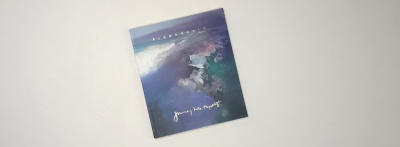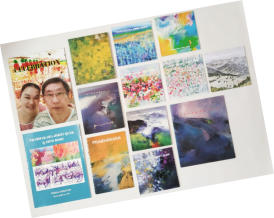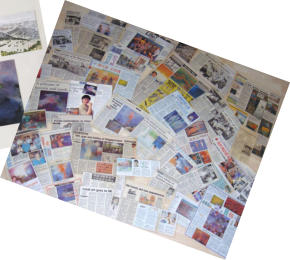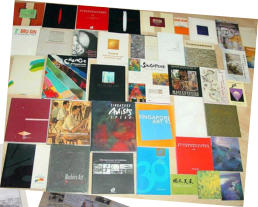A Painter of Sublime Landscapes
By Chia Wai Hon
Jimmy is the name given him by his schoolmates. Prabhakara (Sanskrit
meaning "store of light") is the name he prefers to be known by.
Prabhakara (Jimmy Quek) is a serious artist who has made a name for
himself in the Singapore art circle as one of the more promising young
contemporaries and a painter of sublime landscapes.
Prabhakara excelled in art in his school days, and his lifelong interest in
a professional art career was sparked of by an exhibition he saw in his
youth. His foundation in art was laid when he did a short course at the
Nanyang Academy of Fine Arts in 1973. The need to have a regular
paying job postponed his original intention of immediately becoming a
professional artist. He enrolled for a business study course at Ngee
Ann Technical College in 1974 to study business administration,
accounting and marketing. After graduation in 1977 he joined a piling
firm and stayed with it for three years. Then he started his own design
company working on 3-dimensional assignments and graphic designs.
The designer's job was nearer to his heart's love for art. For a brief
period he was contented. Like most young men. Prabhakara was
energetic, restless and ambitious. He felt restricted working under the
dictates of clients and having to meet deadlines. he yearned for
freedom unlimited - freedom to do what he liked, when and how a
piece of work should be carried out. He was prepared to pay a price for
this freedom, and so it was that after four years as his own design
manager, he severed ties with the business world and struck out on his
own as an independent professional artist. His new found confidence
came to him after a short stint with La Salle College of Art, 1985-86 and
his many successes in art exhibitions and competitions. He was also
encouraged by the support given him by Della Butcher's Gallery of Fine
Art.
At La Salle, Prabhakara painted realistic landscapes, still-lifes and
figures. The focus was on orchestration of colours and rich textural
surfaces applied in heavy, vigorous strokes. Shapes and forms were
boldly delineated in a subconscious attempt to bring out the abstract
quality inherent in a landscape or a still-life. These early experiments
were developed in 1987 into a series of fluid landscapes in which the
heavy impasto had given way to diaphanous brush strokes that were
charged with an energy and expressiveness that bespoke a mind that
had penetrated beneath the superficial appearance of subject matter.
This was the first breakthrough from realism to a semi-abstract art
form for the artist.
As Prabhakara probed deeper to discover the essence of a panoramic
landscape seen from an elevated viewpoint, his paintings attained a
breadth of vision totally absent in his earlier works. His 1990 series of
landscapes is a felt "presence" of the awesome spectacle of the majesty
and grandeur of atmospheric space. The earlier paintings despite being
semi-abstract in concept, were still firmly grounded in visual reality.
This later series has moved further away, relying more on felt sensation
and the creation of forms with free-flowing brush strokes. Always there
is this swirl of colours, harmonious or clashing at times, with a strong
red, orange, or yellow, to give intensity to strong, tumultuous
movements in the foreground. Calm and peace is restored in the
background where an identifiable feature, such as a high horizon, a
solitary peak, or a headland, brings back the reality he started with. In
this 1990 series, Prabhakara has reached artistic maturity displaying
consummate technical skill and high emotive power in his response to
his theme.
Since 1991, Prabhakara has shifted his theme to concentrate on
movements of figures in the streets, and in MRT stations. He dispenses
with reference points reducing his paintings to space and planes. It is
the movement of figures that counts, and not the figures per se. This
line of development can be seen to point to only one direction - total
abstraction.
The source of Prabhakara's art philosophy is anchored in Buddhism. He
subscribes fully to the embalming influence of daily meditation. He
pointed out that in meditation, the mind is set free to dwell on a higher
plane of consciousness. Calm and tranquillity is restored to a turbulent
mind, and it is in such moments that many of his art solutions were
worked out. He cited the early example of his 'tree' series. he started a
landscape with rubber trees and left it unfinished because he ran out
of ideas. For years the tree idea was at the back of his mind. Then one
day, after meditation, it dawned on him to paint the sound and
movement of trees rather than their physical attributes. Since then, he
has great faith in employing a meditative approach in his painting. He
claimed that meditation has given him a propensity for change, and
that he is more daring and adventurous in his search to find himself in
art.
Prabhakara is an artist on the go. He has come some way up the ladder
of success in his chosen profession. He is still young, and with the kind
of dedication and commitment that have sustained him all these years,
he should have no difficulty securing his niche in the forefront of
Singapore art.
16th April, 1992
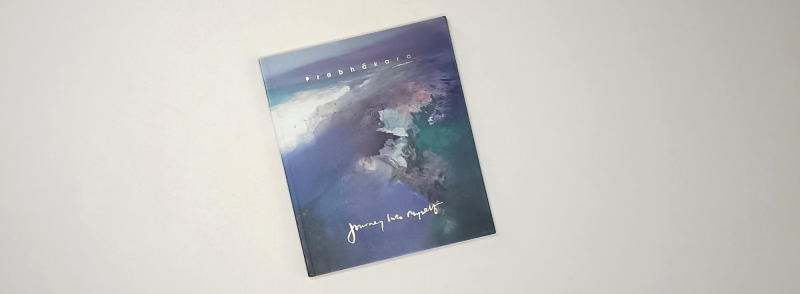



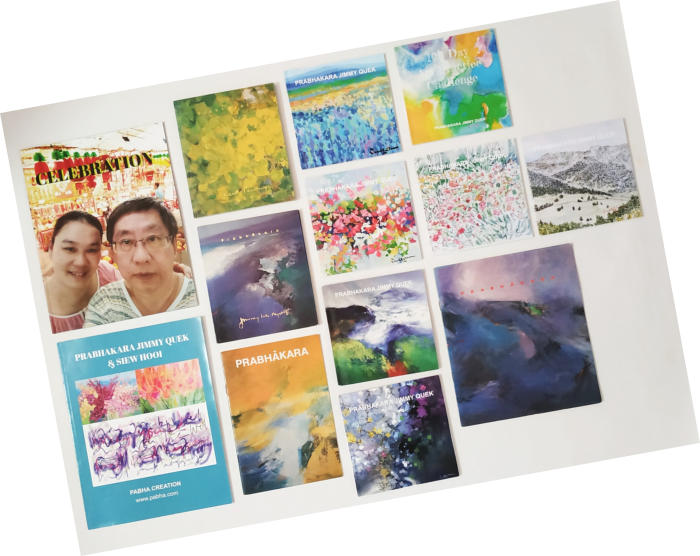
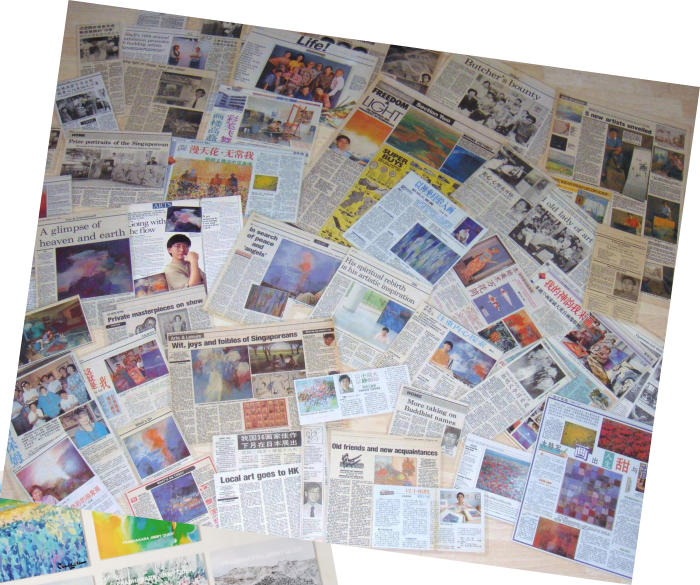
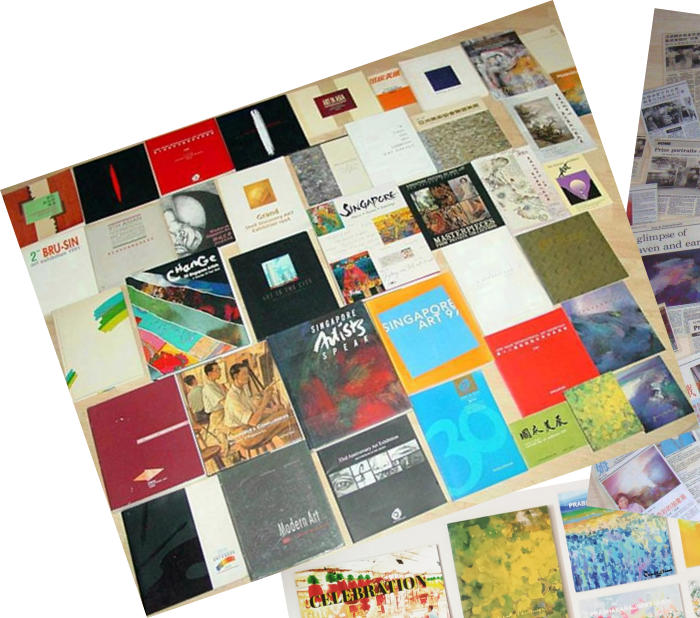
A Painter of Sublime Landscapes
By Chia Wai Hon
Jimmy is the name given him by his
schoolmates. Prabhakara (Sanskrit meaning
"store of light") is the name he prefers to be
known by. Prabhakara (Jimmy Quek) is a
serious artist who has made a name for himself
in the Singapore art circle as one of the more
promising young contemporaries and a painter
of sublime landscapes.
Prabhakara excelled in art in his school days,
and his lifelong interest in a professional art
career was sparked of by an exhibition he saw
in his youth. His foundation in art was laid
when he did a short course at the Nanyang
Academy of Fine Arts in 1973. The need to have
a regular paying job postponed his original
intention of immediately becoming a
professional artist. He enrolled for a business
study course at Ngee Ann Technical College in
1974 to study business administration,
accounting and marketing. After graduation in
1977 he joined a piling firm and stayed with it
for three years. Then he started his own design
company working on 3-dimensional
assignments and graphic designs. The
designer's job was nearer to his heart's love for
art. For a brief period he was contented. Like
most young men. Prabhakara was energetic,
restless and ambitious. He felt restricted
working under the dictates of clients and
having to meet deadlines. he yearned for
freedom unlimited - freedom to do what he
liked, when and how a piece of work should be
carried out. He was prepared to pay a price for
this freedom, and so it was that after four years
as his own design manager, he severed ties
with the business world and struck out on his
own as an independent professional artist. His
new found confidence came to him after a
short stint with La Salle College of Art, 1985-86
and his many successes in art exhibitions and
competitions. He was also encouraged by the
support given him by Della Butcher's Gallery of
Fine Art.
At La Salle, Prabhakara painted realistic
landscapes, still-lifes and figures. The focus was
on orchestration of colours and rich textural
surfaces applied in heavy, vigorous strokes.
Shapes and forms were boldly delineated in a
subconscious attempt to bring out the abstract
quality inherent in a landscape or a still-life.
These early experiments were developed in
1987 into a series of fluid landscapes in which
the heavy impasto had given way to
diaphanous brush strokes that were charged
with an energy and expressiveness that
bespoke a mind that had penetrated beneath
the superficial appearance of subject matter.
This was the first breakthrough from realism to
a semi-abstract art form for the artist.
As Prabhakara probed deeper to discover the
essence of a panoramic landscape seen from
an elevated viewpoint, his paintings attained a
breadth of vision totally absent in his earlier
works. His 1990 series of landscapes is a felt
"presence" of the awesome spectacle of the
majesty and grandeur of atmospheric space.
The earlier paintings despite being semi-
abstract in concept, were still firmly grounded
in visual reality. This later series has moved
further away, relying more on felt sensation
and the creation of forms with free-flowing
brush strokes. Always there is this swirl of
colours, harmonious or clashing at times, with
a strong red, orange, or yellow, to give intensity
to strong, tumultuous movements in the
foreground. Calm and peace is restored in the
background where an identifiable feature, such
as a high horizon, a solitary peak, or a
headland, brings back the reality he started
with. In this 1990 series, Prabhakara has
reached artistic maturity displaying
consummate technical skill and high emotive
power in his response to his theme.
Since 1991, Prabhakara has shifted his theme
to concentrate on movements of figures in the
streets, and in MRT stations. He dispenses with
reference points reducing his paintings to
space and planes. It is the movement of figures
that counts, and not the figures per se. This line
of development can be seen to point to only
one direction - total abstraction.
The source of Prabhakara's art philosophy is
anchored in Buddhism. He subscribes fully to
the embalming influence of daily meditation.
He pointed out that in meditation, the mind is
set free to dwell on a higher plane of
consciousness. Calm and tranquillity is restored
to a turbulent mind, and it is in such moments
that many of his art solutions were worked out.
He cited the early example of his 'tree' series.
he started a landscape with rubber trees and
left it unfinished because he ran out of ideas.
For years the tree idea was at the back of his
mind. Then one day, after meditation, it
dawned on him to paint the sound and
movement of trees rather than their physical
attributes. Since then, he has great faith in
employing a meditative approach in his
painting. He claimed that meditation has given
him a propensity for change, and that he is
more daring and adventurous in his search to
find himself in art.
Prabhakara is an artist on the go. He has come
some way up the ladder of success in his
chosen profession. He is still young, and with
the kind of dedication and commitment that
have sustained him all these years, he should
have no difficulty securing his niche in the
forefront of Singapore art.
16th April, 1992
